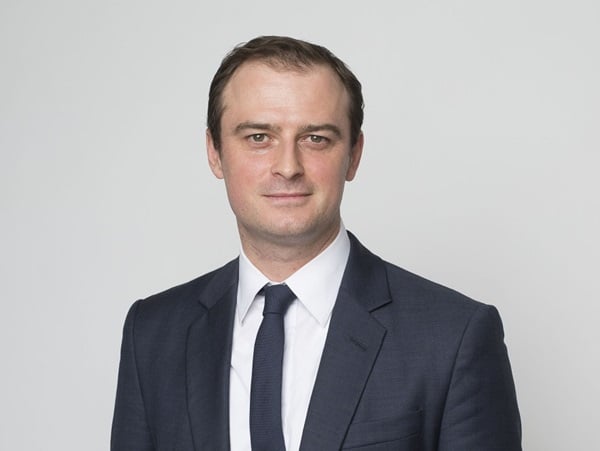Analysis
Why Morgan Stanley’s New Blue Rider Group Brings Serious Expertise to Buying Art
The finance firm is taking a closer look at the booming art market.

The finance firm is taking a closer look at the booming art market.

Eileen Kinsella


Left to right: Lauren Welsh Sparrow, Dan Desmond, Maryanna McConnell.
Morgan Stanley is the latest major finance firm to eye the booming global art market as a platform with enormous potential for bolstering its high net worth client business. This includes advising aspiring and existing collectors about major purchases and managing collections as part of their broader investment portfolios. For example, the firm is the lead underwriter of one of the New York fall season’s most anticipated shows, the upcoming Frank Stella retrospective opening at the newly-reopened Whitney Museum on October 30.
In July, the firm launched the Blue Rider Group—a nod to the Der Blaue Reiter, a group of iconoclastic artists working in Munich in the early 20th century. artnet News recently spoke to Blue Rider Group member Dan Desmond about his team’s approach to advising clients, including its focus on art world networking.
What does the Blue Rider Group do, exactly?
The vision for the Blue Rider Group is to provide financial services to the art community with a family office approach. Although financial advice is our main focus, like most family offices, we offer other services. We think there is a lot of value in our ability to connect our clients to each other, institutions and professionals in the space.
What have you identified as the gaps in service to the art community and how do you aim to address that for the clients you serve?
The biggest gap in service is at the crossroads of art and finance—finding professionals who can provide advice on both.
Managing client money is our primary focus. We develop customized solutions for a client base with very different needs. For a hedge fund principal, we might focus on liquid, opportunistic, short-term investment ideas. For a foundation, we might leverage Morgan Stanley’s Sustainability Institute to develop a socially responsible asset allocation.
Of course art is a big part of our clients’ lives and in most cases their balance sheets. Having an understanding of our clients’ collections is important for us when constructing investment portfolios, advising on a sale, analyzing the collateral for a loan or guiding tax efficient planning.
What do you think are the most innovative aspects of the Blue Rider group? How do you see this benefiting clients?
We not only service the art community but we actively participate in it. We have the ability to support organizations and projects directly. Also, we have a diverse client base and that connectivity is helpful to our clients in different ways. For collectors this could mean access to an intimate dinner with a well-known artist or introductions to other collectors to help acquire or sell a work. But a lot of clients are just hungry for information. We speak with artists, curators, gallerists, critics, collectors, and auction house experts every day. You pick something up in every conversation—some of those things are worth sharing.
How did you become interested in art?
My interest in contemporary art was largely influenced by Bard College’s Center for Curatorial Studies (CCS) program. As an undergraduate at Bard I spent a lot of time at the Hessel Museum on campus. I saw amazing shows—some of which continue to resonate with me today. After graduating I moved to New York city and joined artnet where I managed the client service group. That is when I started to visit galleries on a regular basis and became involved in the community.
What do you collect?
My wife and I have been focused primarily on artists of our generation and have acquired a number of pieces by Lucas Blalock, Richard Aldrich, Keltie Ferris, Justin Adian, and David Adamo. That being said we have a number of outliers: Lynda Benglis, Thomas Struth, David Deutsch, and Sol Lewitt, to name a few. The works in our collection are primarily abstract or conceptual.
How did you transition to finance?
At Cornell Business School, I started thinking about the intersection of finance and art and a role that would enable me to continue to work in both fields. After school I went into private banking and initially focused on working with hedge fund principals who collect art. Over the years I built a team and we widened the scope of people that we work with. Now our primary focus is collectors in general—from generational wealth to technology entrepreneurs and everyone in between. That being said, the glue that binds our business together is the artists, artist foundations, museums and non-profits in the arts that we work with.
There is a real sense of community in our client base—they all come from different backgrounds but have a keen interest in supporting artists and arts organizations.
How do you deal with such a disparate group and their needs?
By having a diverse team; my partners and I have very different backgrounds. Maryanna McConnell also got her start in the art world, but at an auction house. She was at Christie’s before transitioning via MIT to Boston Consulting Group, where she worked with Fortune 500 companies. Lauren Sparrow has worked in finance her whole career on trading desks and in investment roles across Wall Street.
Why did you choose the name Blue Rider Group?
In the same way that Wassily Kandinsky, Franz Marc, and friends broke away from the artist association in 1911 because they found it limiting, it was the right moment for us to start something new.